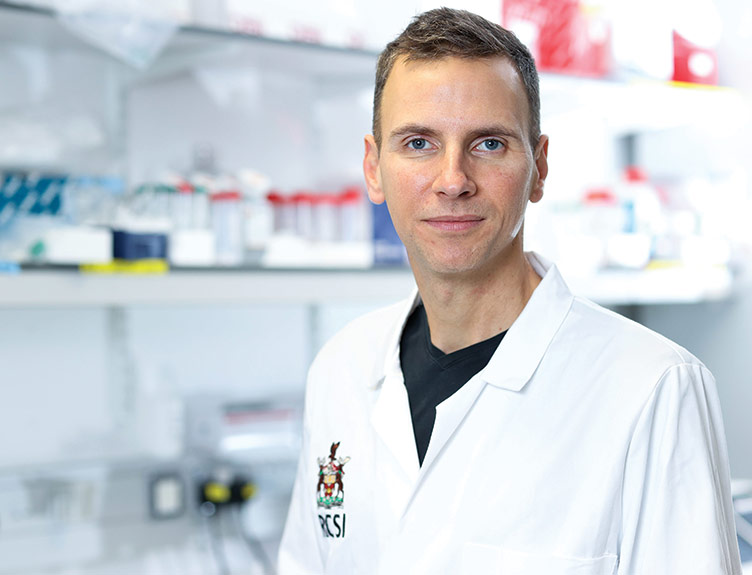RCSI hosts CSCB Advances in Synthesis and Chemical Biology

RCSI was the venue for recent Advances in Synthesis and Chemical Biology V, the fifth annual Centre for Synthesis and Chemical Biology (CSCB) symposium, which was held on 15 December.
The 200 delegates heard plenary lectures from six distinguished speakers, describing current research at the interface between chemistry and biology, including designing new anti-HIV agents and developing a test for multiple sclerosis.
In his opening remarks Michael Horgan, CEO of the RCSI, commended the collaborative efforts of UCD, TCD and the RCSI. "The collaboration between chemistry and biomedical researchers in the three institutions has resulted in new programmes of research in the area of chemical biology and in the sharing of resources. In all three institutions the CSCB has had a major impact on graduate and undergraduate teaching. Here in RCSI the CSCB-derived resources have been of invaluable benefit to the teaching of undergraduate and postgraduate Chemistry programmes in the School of Pharmacy."
Starting the day’s programme of lectures Professor Tom Simpson, University of Bristol, explained how the answers are in the genes in his lecture about the antibacterial skin cream Mupirocin entitled Synthetic, Structural and Genetic Studies on Antibiotic (Mupirocin) Biosynthesis. In her lecture Chemical Tools for the Study of Complex Biological Systems, Professor Barbara Imperiali of Massachusetts Institute of Technology described how chemists are designing molecules to use as 'trojan horses' to investigate cell migration, a key process in immune response and the repair of injured tissue.
Professor Peter Sadler, University of Edinburgh, began his lecture on Using Coordination Chemistry to Design New Medicines by illustrating a periodic table of medicines. Professor Sadler’s lecture emphasised the diversity of roles for metal complexes in medicine citing examples of the potent anti-HIV agent 'Mozobil' and osmium anti-cancer complexes.
Professor Erick Carreira of the ETH, Zürich started the afternoon session with his lecture entitled Amphotericin B: Chemical and Biological Studies. Amphotericin B is the drug of choice for fungal infections and can be used as a functional probe to gain insights into membrane biology. His lecture described his studies to determine the key structural features which give this molecule its biological activity.
Professor Anna Maria Papini, University of Florence, presented an innovative chemical reverse approach to the discovery of specific biomarkers of autoimmune diseases. Based on this research, a diagnostic immunoassay to guide treatment for multiple sclerosis is in commercial development.
The final lecture of the day was presented by Professor Gerard Canters of Leiden Institute of Chemistry, The Netherlands, entitled Redox Activity in Protein Maquettes and Single Enzyme Molecules. Professor Canters described how the manipulation and monitoring of electron transfer between proteins can be used to elicit significant information about enzyme reactions.
In addition to the plenary lectures, postgraduates and postdoctoral scientists from all over Ireland exhibited their research in a poster competition. The standard of entry was very high and the judges Dr Marc Devocelle (RCSI), Dr Francesca Paradisi (UCD) and Professor David Grayson (TCD) had a difficult decision choosing the best three entries. The winners of the poster competition were Dr.Guillaume Anquetin (UCD), Catriona O’Meara (DIT) and Juliet Cotter (UCD).



